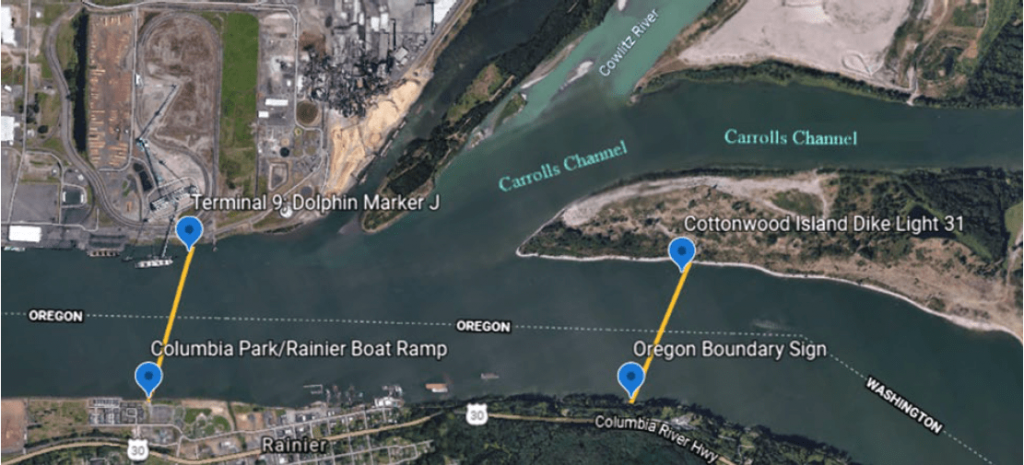
Columbia Managers To Set Springer Seasons
Columbia spring Chinook fishery managers will discuss reopening the lower river for the first time in three years, but also instituting a new closure at the mouth of the Cowlitz as they set this year’s initial seasons on Tuesday.
That’s because while there are forecast to be enough springers returning to the Southwest Washington tributary to meet hatchery broodstock needs and provide some harvest in the big river, it’s also a fairly narrow margin, so a proposed 1-plus-mile-long, no-salmonid-angling-from-a-boat zone on the Columbia as well as all of Carrolls Slough would “provide additional conservation for this stock.”

So says a fact sheet out from WDFW and ODFW this evening ahead of their 10 a.m. conference call and decision tomorrow on this and other spring salmon fisheries on the system.
It also indicates that the Cowlitz itself is expected to be also closed to springer retention, similar to the past two seasons.

Returns to the Kalama and Lewis are expected to be stronger this year too and thus 2019’s and 2020’s closure of the Columbia below Warrior Rock, at the downstream end of Sauvie Island, does not appear to be up for discussion.
Outside of the Cowlitz closure, state staffers are proposing the Columbia to be open for boat and bank fishing from Buoy 10 up to Beacon Rock, and bank fishing only from there to the dam. The fact sheet states “WDFW will require that only hand-cast lines may be used from Beacon Rock to the Bonneville Dam deadline,” impacting bankies who use kayaks or boats to place lines in deeper water than they can cast to.
The overall Columbia 2021 springer forecast is for 143,200 fish, with 75,200 of those headed for Idaho and other rivers in the upper watershed and 68,000 returning to the lower end of the basin, primarily the Willamette.
Last year’s prediction was for 135,800 springers and 142,494 actually returned.
As ever, the mainstem fishery is being managed with a prerunsize update buffer, which in this year’s case means the sliding-scale impact rate is 1.0 percent on ESA-listed springers for nontreaty seasons.

According to the fact sheet, under the proposed season anglers are modeled to keep 3,025 springers on the Columbia below Bonneville – about 500 more than last year – including 2,159 bound for tribs above the dam, which is down about 60 fish from 2020.
“Due to the limited allocation of upriver spring Chinook, the [Columbia River Recreational Advisory Group] generally supported the proposed season for the LCR since few alternatives are available,” it states.
There is a slight wrinkle with allocations. While ODFW and WDFW agree on an 80-20 sport-commercial split, no more than 70 percent of the rec portion can be used on the Lower Columbia under Washington’s policy ,while Oregon’s rule limits fisheries above Bonneville to no more than 25 percent of the sport allocation.
“Therefore, staff modelling (sic) only utilizes 95% of the recreational share of upriver spring Chinook impacts,” the fact sheet states.
The way the conference call works is that the fact sheet is read, managers ask questions, sportfishing advisors and then the general public provide comment, followed by discussion and a decision from ODFW’s and WDFW’s representatives. They don’t always go with staff recommendations, but generally do.
Managers will also discuss a March 16-May 5 season in the usual places of the Columbia Gorge reservoirs up to the state line east of McNary Dam, where 292 are expected to be retained.
